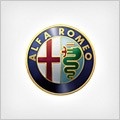
ALFA ROMEO Giulietta
Generations Timeline, Specs and Pictures
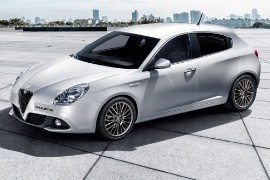
After six years on the market, the Giulietta was refreshed in 2016.
It took some design cues from its bigger sibling Giulia and introduced new engines to match the refreshed look.
The Giulietta name wasn’t new in the Alfa Romeo family. The first model that with that name was released in 1954 and it was offered as a family sedan, a coupe, and a roadster. In 1977, the Giulietta name was revealed again on a small executive four-door vehicle and it was produced until 1985. The third time when Alfa Romeo used the name was in 2010, with the launch of the 5-door hatchback. This time, with a front-wheel-drive.
The facelift adopted some styling cues from the Giulietta, which was the Alfa Romeo paradigm. It was enhanced and took a few exterior style elements, such as the honeycomb grille, the front bumper, and a refreshed logo. The darkened headlights amplified the sporty look of the car.
Inside, the Giulietta’s design wasn’t as attractive as the exterior. It featured the same look for the dashboard and the instrument cluster looked good. A new Uconnect infotainment unit was fitted with a 5” or 5.6” touchscreen in the middle of the dashboard. It featured internet and Bluetooth connectivity. A live navigation system was available as an option.
For the engine bay, the 2016 Giulietta received a new 1.6 jTDM diesel engine mated to a TCT (dual-clutch) gearbox. For the entire range, Giulietta was fitted as standard with a 6-speed manual and only some of the engines were available with the automated transmission.
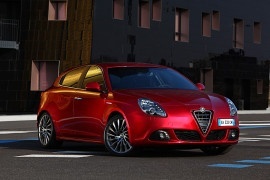
A century after the Alfa Romeo brand was established in Italy, the third generation of the Giulietta model was launched.
And it was 25 years after the last previous Giulietta left the assembly line.
The Giulietta started its career in 1954 as a sedan and it was produced until 1965. Twelve years later, the second generation appeared and it lasted until 1985. After the Fiat took-over the Alfa Romeo brand, it changed the names into numbers, so there was another gap. But then it changed again in 2008 when the MiTo appeared, losing the numbers. So, the 2010 Giulietta was the successor of the Alfa Romeo 147.
The exterior look was something different than the rest of the compact class. While the Germans are building cars with forms that follow function, the Italian designers are drawing the vehicles and the engineers had to figure-out to install somehow everything inside that shape. The Giulietta, with its rounded headlights stretched over the hood, were unique in the compact hatchbacks segment. The rear door handles were camouflaged in the window’s frames.
Inside the vehicle, the car had a clean look, with few buttons on the center console, a clear instrument cluster with two, big, round dials, and a small display between them. A concession made for the engineers was the two smaller dials for the fuel gauge and coolant temperature. The audio system was integrated into the dashboard.
In the rear, there was limited room for three passengers for both the head and legs. It was a sacrifice for the outside look, which received many design awards.
The engine lineup has consisted of units taken from the Fiat Powertrain, with power ranging from 105 hp up to 170 hp.
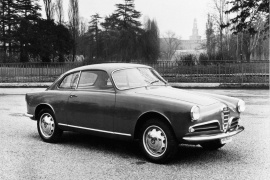
After WWII, Alfa Romeo started to get back on its feet, and the Giulietta Sprint 2+2 Coupe was the first to come on the market in 1954.
Back in the ’50s, there was little room for sports cars in Italy or Europe, but Alfa Romeo was a brand built on sporty, agile vehicles. That’s what it was doing before the big war, and that’s how customers recognized it. So, the management decided to risk and showed the Giulietta Sprint in 1954.
Designed by Franco Scaglione at the Bertone Studios, the Giulietta Sprint featured a tall and narrow “Alfa-shield” in the middle of the front fascia, flanked at the bottom by two louvers that hosted the parking lights. Its flush bodywork was way ahead of its time and didn’t resemble any of Alfa Romeo’s products before WWII. There were no flashy wheel fenders or sculptured door panels, nor side steps. Instead, its curved windshield and greenhouse ended with a sloped wide rear windscreen and a short trunk lid. Both bumpers were slim like the carmaker installed them only because they were mandatory.
Inside, Alfa Romeo placed two bucket seats at the front and a small bench for two in the back. Due to the sloped-down roofline, it was challenging to put two adults in the back and keep them there, even for short trips. The carmaker placed the ignition on the left side of the steering wheel on the flat dashboard, closer to the driver’s door. Alfa Romeo installed an instrument panel with three dials, where the tachometer took the center position. It was flanked by the speedometer on the right and by a dial divided into three on the left, which was used for the fuel-level gauge, the coolant temperature indicator, and the ammeter. A unique feature for the car was the floor-mounted gear stick tilted towards the driver.
Under the hood, the Italian carmaker placed a 1.3-liter engine fed by two dual-barrel carburetors and paired it with a four-speed manual gearbox.

Alfa Romeo introduced the Giulietta 2+2 in 1954 at the Turin Motor Show, and in the following year, it unveiled the open-top version named Giulietta Spider.
The Giulietta lineup was the first significant success for the Italian carmaker after WWII. At first, Alfa Romeo didn’t think to develop a roadster, but the American importer Max Hoffman pushed them to produce it. He said that the U.S. might be an excellent market for a small roadster. Hoffman was right about that. He also was right when he pushed Mercedes-Benz to produce the famous SL “Gullwing,” but not when he drove BMW to make the 507. The Giulietta spider came from a time when cars were built with soul and bought with hearts.
Bertone designed the coupe and, when Alfa Romeo announced that it would be a contest for the roadster version, he lined-up with a prototype. But it was the Pininfarina Design Studio that won and left Bertone and Zagato behind. The arched lines over the rear wheel-wells resembled a hip, and the curved body panels were just too beautiful to be ignored. Its small front headlights and the vast, curved grilles enhanced the car’s look.
Inside, from the left-mounted ignition key to the leather-clad interior, everything was crafted carefully for the new U.S. market. Its three-dial instrument panel with the tachometer in the middle was easy to read and understand by anyone. They lacked many useless gauges showed by other carmakers.
Under the hood, Alfa Romeo installed a small, 1.3-liter engine with four cylinders. It offered just 81 hp, but that was enough for the light, 858 kg. (1892 lbs) roadster.
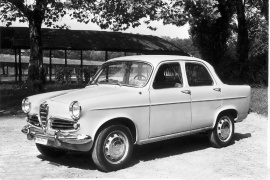
After a two-year delay, Alfa Romeo introduced the four-door Giulietta in 1955, and it became an instant hit thanks to its sporty character and the ability to carry a family.
The Italian carmaker had some financial troubles after it couldn’t sell the 1900 model as well as it hoped. But it managed to get over, and, with a small marketing trick, it convinced customers to return to the Alfa Romeo showroom where they could see the Giulietta.
Its rounded lines and slim pillars were fashionable for European styling. Its front fascia was cluttered by its round headlights, a narrow Alfa Romeo shield, and two horizontal grids on the lower side, just above the chromed bumper. It wasn’t the best-inspired design, but it was original. Even though it was the four-door version of the Giulietta coupe and spyder, it showed a completely different look.
Inside, there was room for four adults with two bucket seats at the front and a bench in the rear. Due to the car’s width and tall transmission tunnel, it wasn’t easy to accommodate three people in the back. For the driver and its front passenger, the carmaker offered plenty of room. The flat and narrow dashboard featured a rounded instrument cluster with a wide speedometer in the middle, flanked by the fuel and the coolant temperature gauges.
Like most Alfa Romeo, the most important part of the car was under the hood, where the carmaker installed a four-pot gasoline engine that provided 54 hp. It was paired to a four-speed manual.























































